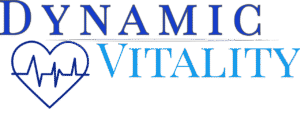Orthopedic treatments
- Home
- Orthopedic treatments

Shockwave and EMTT Treatments for Pain Management
EPAT and ESWT treat the root of your pain non-invasively
There’s a better way. EPAT shockwave therapy and EPAT for plantar fasciitis are evidence based and get to the root of your pain, facilitating healing and accelerating your recovery. EPAT treatment reviews show positive results in improving recovery times and reducing pain. EPAT vs ESWT Both are highly effective, but EPAT focuses on enhancing your body’s regenerative potential, rather than further damaging an area that has degenerated because of poor blood flow, tissue injury, overuse, or weakness
In as few as 3 to 5 weekly 7 to 10-minute sessions in your medical professional’s office, you’ll be on a faster, easier path to feeling better — and back to the activities you love. No risk. No downtime. No surgery, scarring or anesthesia. And extremely high patient satisfaction — more than 80%!
To further increase the efficacy of shockwave, many physicians will also combine EPAT and ESWT with EMTT as well as with other non-invasive solutions. Be sure to ask your physician about his or her treatment approach.

FAQs
General Questions
Acoustic Wave Therapy is a non-invasive alternative treatment for active patients who are struggling with pain and not responding to conventional treatment after an injury. There is an immediate post-procedure reduction in pain and improved range of motion
Shockwave therapy devices deliver acoustic energy shockwaves in a phase of either nanoseconds or microseconds to stimulate healing in injured soft tissue, ligaments and tendons.
Shockwave treatment has been shown to have physiologic benefits by:
Increasing cell permeability to create a localized inflammatory response. The energy coming into and out of the tissue increases blood flow, much the same as, but to a greater extent than, a deep tissue massage or percussive hand pressure device known as a TheraGun.
Causing degradation of the nerve bundle (nociception inhibition), which allows for pain modulation via the peripheral nervous system.
Upgrading the physiologic process of healing by stimulating hormones and cells that are associated with a reparative process of healing.
Feet: Plantar fasciitis, Morton’s neuroma, nerve impingement or ligament injury
Ankle: Chronic ankle pain, whether from osteoarthritis or ligamentous instability; a ligamentous defect in the ankle; gastrocnemius muscle strain or injury
Lower leg: Achilles tendonitis; gastrocnemius muscle strain or injury; retrocalcaneal bursitis (heel pain)
Knee: IT band; insertional pain; strain to the medial or lateral collateral (ligaments that form either side of the knee); jumper’s knee; patella tendinopathy
Upper leg: quad injury or hamstring strain or injury
Hand: strains and injuries
Elbow: Little leaguer’s elbow; tennis elbow; tricep or bicep elbow injuries
Hip: Gluteal muscle strain; bursitis; iliopsoas bursitis; hip flexor tendinosis
Shoulder: Calcinosis of the rotator cuff; partial tear of the rotator cuff; bicep injuries
Patients will experience a number of fast pulses and some warmth.
“I tell patients that I would like for them to have less than 5 out of 10 discomfort. I call it discomfort; I don’t call it pain,’’ Piantanida said. “More discomfort is sometimes felt when we are doing the acoustic shockwave closer to a bone.’’
A little swelling and redness may also occur.
“As we treat tissue with energy, blood flow increases, so there may be some bruising with tissue. We are able to control the machine, so if we are told that the discomfort is 5 out of 10 when we start the machine, we’ll turn it down so it is more comfortable.’’
“The results of treatment are based on completion of the treatment. A lot of our patients, in my experience, even after the first treatment, are feeling significantly better and resuming some normal activity within 24 to 48 hours of the treatment.
“The nice thing about shockwave is you’re going to get results very quickly. Though we have six weeks set aside, I anticipate that many of these patients are going to be at their treatment goal within three to four weeks,’’ Piantanida said
I work with patients facing neurologic conditions, such as stroke, ALS, or chronic spasticity linked to neurologic deficits. In cases of neurologic spasticity, there are specific situations in which shockwave therapy may be beneficial. These individuals are not typical athletes; they are patients dealing with chronic medical conditions that affect their neuromuscular systems, and they could significantly benefit from shockwave therapy.
Patients who have lingering injuries and who have not responded to time-honored methods of treatment and therapy are likely candidates.
“We are not willing to push shockwave ahead of all the other therapies (physical therapy). Having said that, there are a large number of patients who we see that deal with chronic or unrelenting pain from a sports or muscular-skeletal injury that may be 4 to 6 weeks in duration or it may be four months or six years in duration.
“Shockwave can handle all of that in terms of the therapeutic indication, but it is costly, so we want to make sure that we are using our health care dollars in a way that our patients are getting the best impact. There will be a variety of acute conditions where it may be relevant, but for the most part, these are patients who are at least four to six weeks out from the injury, and their response to therapy has yet to be realized in terms of the benefit.
The benefits of EPAT/ESWT shockwave treatments
Non-invasive
No anesthesia required
No risk of infection
No scarring
No downtime
Over 80% patient satisfaction
Cost effective
Faster, easier healing
